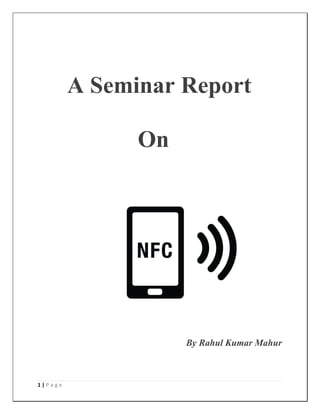This document provides an overview of Near Field Communication (NFC) technology, including NFC modes, use cases, tag types, related specifications, and forum standards. It describes key aspects of NFC such as communication occurring when devices are 4 cm or closer, the reader/tag relationship, and operating modes including read/write, peer-to-peer, and card emulation. Common use cases like service initiation, sharing, connecting devices, ticketing, and payment are outlined. The document also discusses NFC tag types, related specifications like ISO 14443 and MIFARE, and forum standards including NDEF, RTD, and LLCP.




















